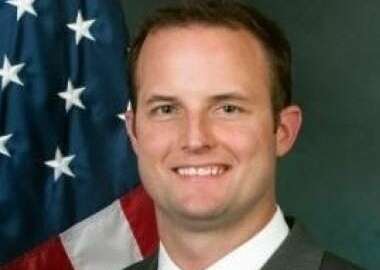
DHS may be enamored with emerging tech like everyone else, but priority is on IT fundamentals
The Department of Homeland Security is hearing out pitches on emerging tech, but it's more focused on established on securing a consistent IT experience across ...
Gather a group of chief information and technology officers from across the Department of Homeland Security and you won’t necessarily hear an impassioned plea for help in adopting the emerging tech buzz words.
Emerging technologies such as machine learning and artificial intelligence are an interest. But they may not yet be the number one priority for the department, which after more than 15 years, is still searching for ways to bring more consistency across its 21 component agencies.
DHS is, however, focused on simplifying its IT architecture and harmonizing the end-user experience, Stephen Rice, the department’s deputy chief information officer, said.
“We could have a great data center [and] compute and storage model. We could have a great network that transports data effectively, but at the end of the day it’s a matter of ensuring that the end-user experience is consistent,” he said Thursday at an AFCEA D.C. event in Arlington, Virginia.
Harmonizing IT tools and experiences for DHS employees across the department is especially important, given the numerous opportunities the components have to connect, share resources and collaborate.
“In the event that there is ever a bad day for cyber within a very wide mission for DHS, how do I ensure that I have the business processing, the agreements to say who will fail over to get support from a risk-based perspective?” Rice said. “If FEMA’s having a challenge, who backstops FEMA? If TSA’s having a challenge, who’s backstopping TSA?”
The IT fundamentals are also a priority for the Coast Guard, which recently updated its four-year strategic plan and added a few more words to its traditional motto of semper paratas.
“We’ve expanded that from ready and added resilient and also relevant,” said Brian Burns, deputy CIO for the Coast Guard.
The Coast Guard is interested in emerging tech trends. It wants to move to the cloud, and it views artificial intelligence and machine learning as a workforce tool “way in the future,” Burns said.
But in the present day, the Coast Guard is more focused on IT fundamentals and making investments to its infrastructure, Burns said.
“We are very focused on the tip of the spear and making sure we have mission operations,” Burns said. “With that said, it’s hard for the tip to hit the target if you don’t have a pole to go with it. In order to throw the tip, you have to have a pole. The pole in our case is IT infrastructure.”
It started when the agency finished updating some of its systems last year to Windows 10.
“That has been a paradigm change in how we have to manage our assets,” he said. “We went from [thinking] oh, it’s just an upgrade to the operating system to oh, it’s an upgrade to 33,000 work stations. Now we have to put in the appropriate distribution capabilities. Oh, we have to upgrade the network at tens of millions of dollars … to all of these other capabilities. In terms of the IT refresh, we had a technical debt that’s built up over the last decade or so. This forced us to start that but it also forced us to start thinking in a different direction.”
For the Coast Guard, that different direction means finding vendors to manage services and support more frequent IT refreshes.
“Information needs to be available anywhere, any time but in a full, degraded and disconnected environment,” Burns said. “[It] sounds easy, but it is significantly challenging.”
FEMA has a similar challenge, especially when it comes to basic communication capabilities during natural disasters. The prospect of 5G networks won’t resolve those challenges unless it spreads to the most remote locations.
“I would imagine that people think that 5G with its speeds are really ideal, but … I’m not so sure how resilient it actually will be,” Ted Okada, FEMA’s chief technology officer, said.
He said FEMA instead is more focused on developing simple communications methods for disaster stricken areas.
Brian Gattoni, cybersecurity division chief technology officer for the Cybersecurity and Infrastructure Security Agency, said he identified with Okada’s advice when he was deployed to Florida after the 2017 hurricanes as a member of the DHS Surge Capacity Force.
“No, I don’t have 5G” he said. “We didn’t have any ‘Gs’ there for a little while. The fact that I was part of the IT cadre and I had a [satellite] phone on me issued by FEMA made me a very critical communication node. Going from zero ‘Gs’ to any ‘Gs’ is a major improvement when you’re trying to get more water, tents and supplies delivered to a very specifically affected community.”
CISA is examining emerging technology to review how it might better meet the CISA mission,” Gattoni said. But it’s also evaluating emerging tech trends from the perspective of its customers and its adversaries.
Copyright © 2024 Federal News Network. All rights reserved. This website is not intended for users located within the European Economic Area.
Nicole Ogrysko is a reporter for Federal News Network focusing on the federal workforce and federal pay and benefits.
Follow @nogryskoWFED




